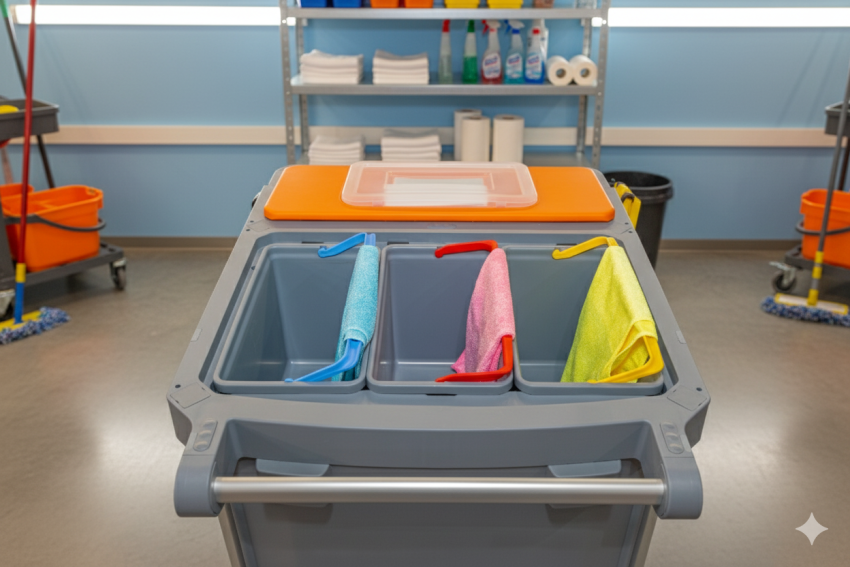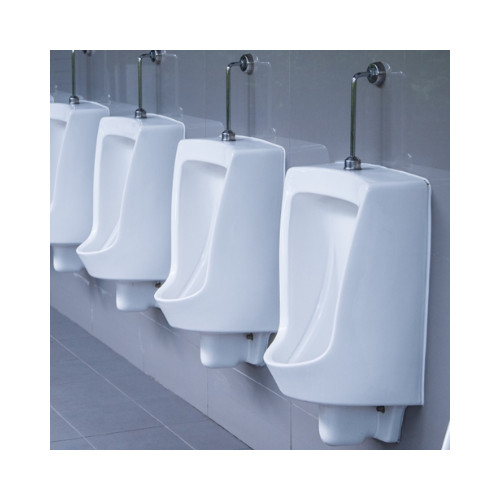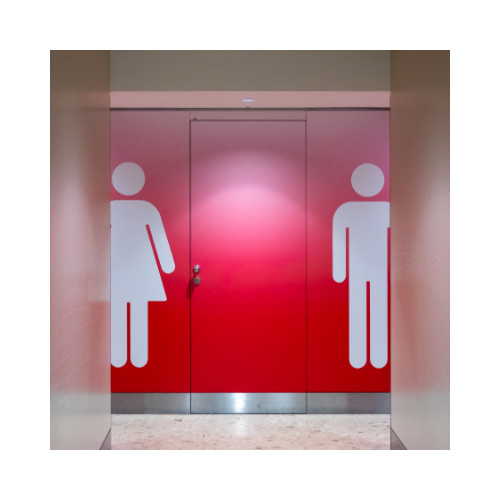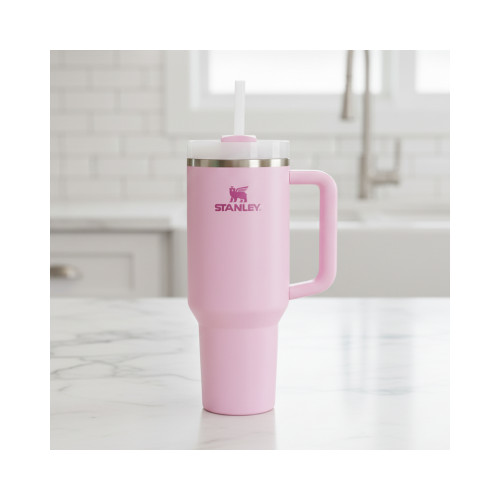
The Importance of Implementing Colour-Coded Cleaning Systems
The adherence to cleaning colour codes is of paramount importance in maintaining cleanliness and hygiene standards in various environments. Developed by The British Institute of Cleaning (BICSc) in the 1990s, this system assigns a specific colour code to each major work area, providing a standardised approach to cleaning practices. The five colour codes used are red, yellow, blue, green, and white.
The Colour Codes and Their Significance
-
Red Code
The red code is designated for toilets and bathrooms. These areas require special attention due to the presence of potentially harmful bacteria and viruses. Using the red colour code ensures that cleaning materials and equipment are dedicated solely to these spaces, preventing cross-contamination and the spread of germs.
-
Yellow Code
The yellow code signifies infectious areas, such as hospitals or medical centres. These environments demand the highest level of cleanliness to prevent the transmission of diseases and infections. By using the yellow colour code, cleaning personnel can easily identify and employ appropriate sanitation measures, minimising the risk of cross-infection within medical facilities.
-
Blue Code
The blue code is assigned to general areas and general cleaning purposes. This includes spaces like offices, hallways, and communal areas. The blue colour code allows for efficient cleaning across a range of locations, ensuring a clean and inviting atmosphere in non-specialised areas.
-
Green Code
The green code is dedicated to kitchen and food preparation areas. These spaces necessitate meticulous cleaning to maintain food safety and prevent the spread of harmful bacteria. By employing the green colour code, cleaning staff can focus on specific requirements unique to food-related areas, such as sanitising countertops, removing grease, and ensuring proper food handling practices.
-
White Code
Last but not least, the white code is specifically designated for operating theatres. These sterile environments demand the highest level of cleanliness to prevent infections during surgical procedures. The white colour code ensures that cleaning processes in operating theatres follow rigorous protocols and use specialised equipment and cleaning agents to maintain a sterile environment.

The Benefits of Colour-Coded Cleaning
Incorporating colour-coded cleaning into your cleaning regimen not only ensures a cleaner and healthier environment but also demonstrates a commitment to maintaining hygiene standards. By adopting this systematic approach, you can effectively prevent the spread of germs and diseases, creating a safer and more pleasant space for everyone. Colour-coded cleaning provides a clear and structured method for cleaning professionals, enabling them to identify and address specific cleaning requirements in different areas.
Furthermore, colour-coded cleaning enhances efficiency and productivity. Cleaning staff can easily locate the appropriate tools and materials for each designated area, saving time and minimising confusion. This streamlined approach reduces the risk of errors and promotes consistent cleaning practices, resulting in a higher level of cleanliness throughout the facility.
Implementing colour-coded cleaning also contributes to employee and occupant satisfaction. When individuals observe the meticulous cleaning practices and adherence to hygiene standards, they gain confidence in the cleanliness and safety of their surroundings. This creates a positive and comfortable environment, whether it's a workplace, a healthcare facility, or a public space.
Moreover, colour-coded cleaning aids in compliance with industry regulations and standards. Many regulatory bodies, such as healthcare organizations and food safety agencies, recommend or require the use of colour-coded cleaning systems. By following these guidelines, organisations can demonstrate their commitment to upholding cleanliness and meeting the necessary industry standards.
So, let's embrace the power of colour-coded cleaning and take a step towards a cleaner future. By implementing this structured approach, we can ensure a higher level of cleanliness, reduce the risk of infections, and create healthier environments for everyone. Whether it's in our homes, workplaces, or public spaces, colour-coded cleaning is a valuable tool in our pursuit of hygiene and well-being.
Stay Connected
Stay connected and be the first to know about our latest products, special offers, and exciting news:The Cleaning Blog
Want to learn more about cleaning? From the latest cleaning and hygiene news to handy how-to guides, why not check out our most popular blog categories.Stay Connected
Stay connected and be the first to know about our latest products, special offers, and exciting news:












